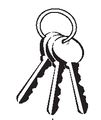Development and Production Cycles
Whether you’re developing and manufacturing the product yourself or licensing it, you need to understand product cycles. As in every business, information is power. You want to know as much as possible about each phase of the business. Your involvement should not stop after the moment of invention. Even if you’re not involved in each phase of development and production, you’ll benefit from knowing what’s going on. Omitting a critical stage or neglecting a detail decreases the possibility of success.

Notable Quotables
Creativity comes from looking for the unexpected and stepping outside your own experience.
—Masaru Ibuka, co-founder, Sony Corp.
Individual companies have slight variations of a development and manufacturing process. The specific cycle depends on the complexity of the product or products to be developed and prepared for market, and the size of the company. The following schedule was generously provided by Hasbro, Inc. A form of it will come into play if you control manufacturing yourself (or use a subcontractor) or if you opt to license the ip rights to others.
November: The product concept is approved. Then comes market research. The marketing, design, and engineering teams join forces to assess consumer reaction to the new concept. Consumer input is invaluable in evaluating the potential for a new concept or in fine-tuning a product prior to its launch. Next up is preliminary costing, followed by the PTO (preliminary takeover) model from the shop.
December: First up, the preliminary takeover. The PTO conference is a critical stage in a product’s transition from concept to reality. At this phase, a product passes from the hands of designers to engineers, with close scrutiny given to such issues as design, cost, reliability, packaging, and manufacturing plans. Next comes the marketing line review. Then the R&D model is finished. The R&D model shop constructs product prototypes early in the development process. Later, model makers may fine-tune mechanisms and build models for use during the ongoing product review process. If hand samples are required for trade shows, they’re made now.
January: The PTO package is approved and the appropriation approval is requested. Also in January is the FTO (final takeover), followed by the marketing line review.
February: The final sculpture is up next. Product sculptors work in consultation with design engineers and marketing managers to transform the product idea into reality.
March: The preliminary drawing is released and the EDM review (engineering, design, and marketing) takes place.
April: The final drawing is released, as is the pattern. The cost is also verified.
May: Tooling starts.
June: The proving model is reviewed and the graphic model completed. Any final engineering changes are made.
July: July first brings MTO (manufacturing takeover) costing. Final packaging specifications are made and final product specifications are set.
August: First up, MTO. Next, marketing line review.
September: The package and art are released. Designing a product’s packaging is an important part of the overall product-development and marketing process. Preliminary instructions are also drafted.

Fast Facts
On July 31, 1790, Samuel Hopkins of Philadelphia, Pennsylvania, received the first U.S. patent for an improvement in “the making of Pot ash and Pearl ash by a new Apparatus and Process.” President George Washington signed the patent, as did Attorney General Edmund Randolph and Secretary of State Thomas Jefferson. The original document is still in existence in the collections of the Chicago Historical Society.
October: The art is released, and the first shots (samples of the molded parts) are made.
November: November brings the marketing line review. All the functions involved in the creation of a product, including R&D and engineering, come together. Features such as design, packaging, and advertising are evaluated, and the overall design and production schedule is monitored.
December: First up, VSP (vendor sample pilot). Some products are manufactured by outside vendors. If so, before full production is started, the vendor produces a sample product. Marketing, design, engineering, and R&D teams evaluate all aspects of the pilot product to determine whether it conforms to design and engineering specifications before authorizing the start of production. Final packaging is also decided upon and the final instructions are released. Finally, another marketing line review takes place.
January: January brings the FEP (final engineering pilot) and RTP (release to production).
February: The product is taken to trade shows and shown to buyers.
March: Production starts.
Bright Ideas
The first patent for the new millennium was issued on January 4, 2000, to Leonard Siprut from San Diego for a multiple component headgear system. U.S. Patent No. 6,009,555 is a sun visor/eye shield for surfers, kayakers, bikers, and athletes in other extreme sports. In contrast, the first patent issued in 1900 was to Louis Allard of Utah for an early version of the washing machine.
..................Content has been hidden....................
You can't read the all page of ebook, please click here login for view all page.
